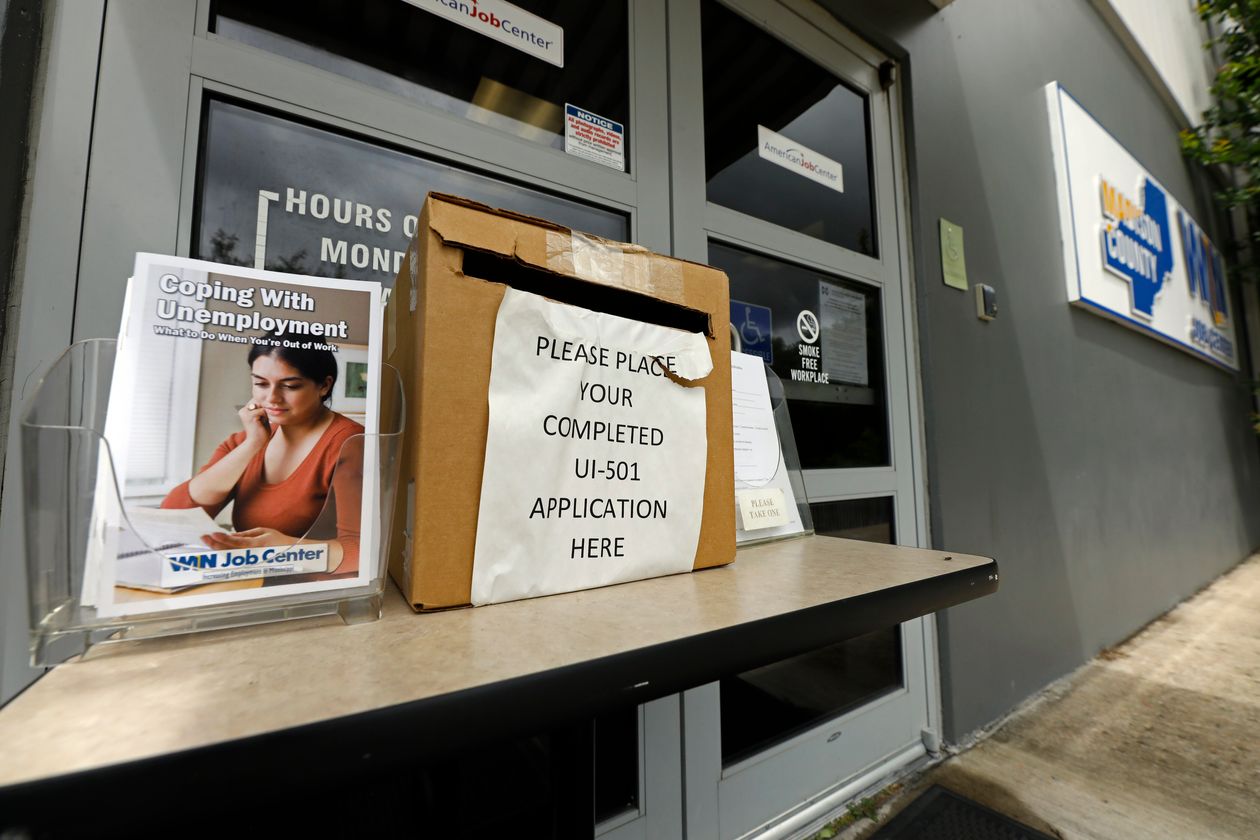By Eric Morath, Wall street Journal—
U.S. workers filed 2.1 million jobless claims last week, extending a downward trend but remaining multiple times higher than before the coronavirus pandemic.
The Labor Department’s tally of filings for unemployment benefits was down compared to 2.4 million the prior week. Weekly unemployment claims—a proxy for layoffs—have held above 2 million jobs since mid-March, breaking records dating back to the late 1960s.
The number of workers initially seeking jobless benefits peaked at a seasonally adjusted 6.9 million for the week ended March 28, and has eased since to around 2.5 million in recent weeks.
The number of Americans receiving jobless benefits, also known as continuing claims, was 21.1 million in the week ended May 16, down 3.9 million from the prior week. The record prior to this year was 6.5 million in 2009, near the end of the last recession.
A continued high level of jobless-benefit applications indicates that retailers, factories, municipal governments and other employers are laying off more workers, and that Americans out of work for weeks are managing their way through overwhelmed state systems. However, rising claims no longer necessarily means unemployment rising further because new job losses are increasingly offset by workers being recalled or otherwise finding employment.
“I think we’ve hit the bottom, as far as layoffs,” said Marianne Wanamaker, a labor economist at the University of Tennessee, adding that she doesn’t yet see rapid hiring. “People should be starting to come off unemployment insurance…auto factories and suppliers have called back workers and you’re seeing states that shut down construction allowing those projects to restart.”
Tents Unlimited, an event-rental company in Torrington, Conn., recently recalled three laid-off workers after it qualified for a federal loan and the state allowed restaurants to start serving patrons outside last week. That caused a rush in orders for tents and tables, said Brittany Sherwood, who owns the business.
The company still has one employee who hasn’t been recalled, and it has forgone hiring about six temporary workers it would have needed—had the coronavirus pandemic not happened—to staff the usual crush of spring weddings and corporate events.
“It’s going better—it was pretty bleak before,” Ms. Sherwood said. The restaurant orders don’t replace all the lost work “but it helps pay the bills.” The company’s sales are still down 80% from last year, but she is hopeful it can survive until 2021, which she expects to be a spring busy with rebooked weddings.
Economists typically look at jobless claims as a measure of very recent layoffs, but the data has become a less reliable indicator, said Donald Grimes, a labor economist at the University of Michigan.
The recent data is counting up workers who struggled for weeks to file for benefits and those previously jobless who are enticed by enhanced payments and expanded eligibility, he said.
Some of those applying last week may have applied earlier and been rejected. Others may have been jobless before March.
The primary claims totals exclude hundreds of thousands of self-employed and gig-economy workers receiving unemployment benefits for the first time through a temporary coronavirus-related program. The omission of self-employed workers means the actual number of workers seeking claims has been higher since the federal program—called pandemic unemployment assistance and included in a stimulus package approved in late March—got under way.
Many states have only started paying benefits through that program in recent weeks.
“Claims are likely to remain high for some time, even as the economy improves, because there is such a backlog,” Mr. Grimes said. He and colleagues project the pandemic-related shock will result in about 30 million total jobs lost, with about a third of those returning during the summer months.


Leave A Comment
You must be logged in to post a comment.